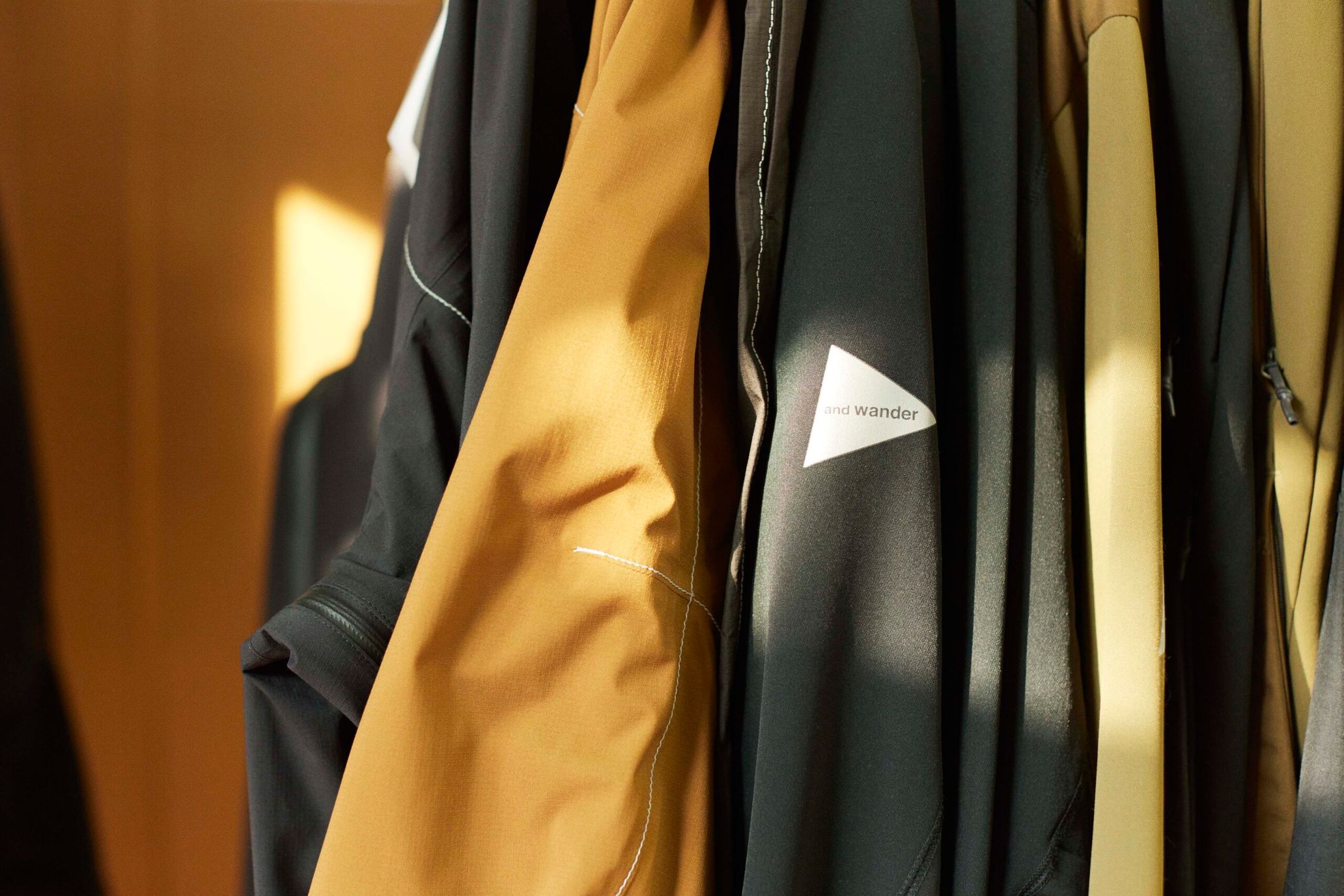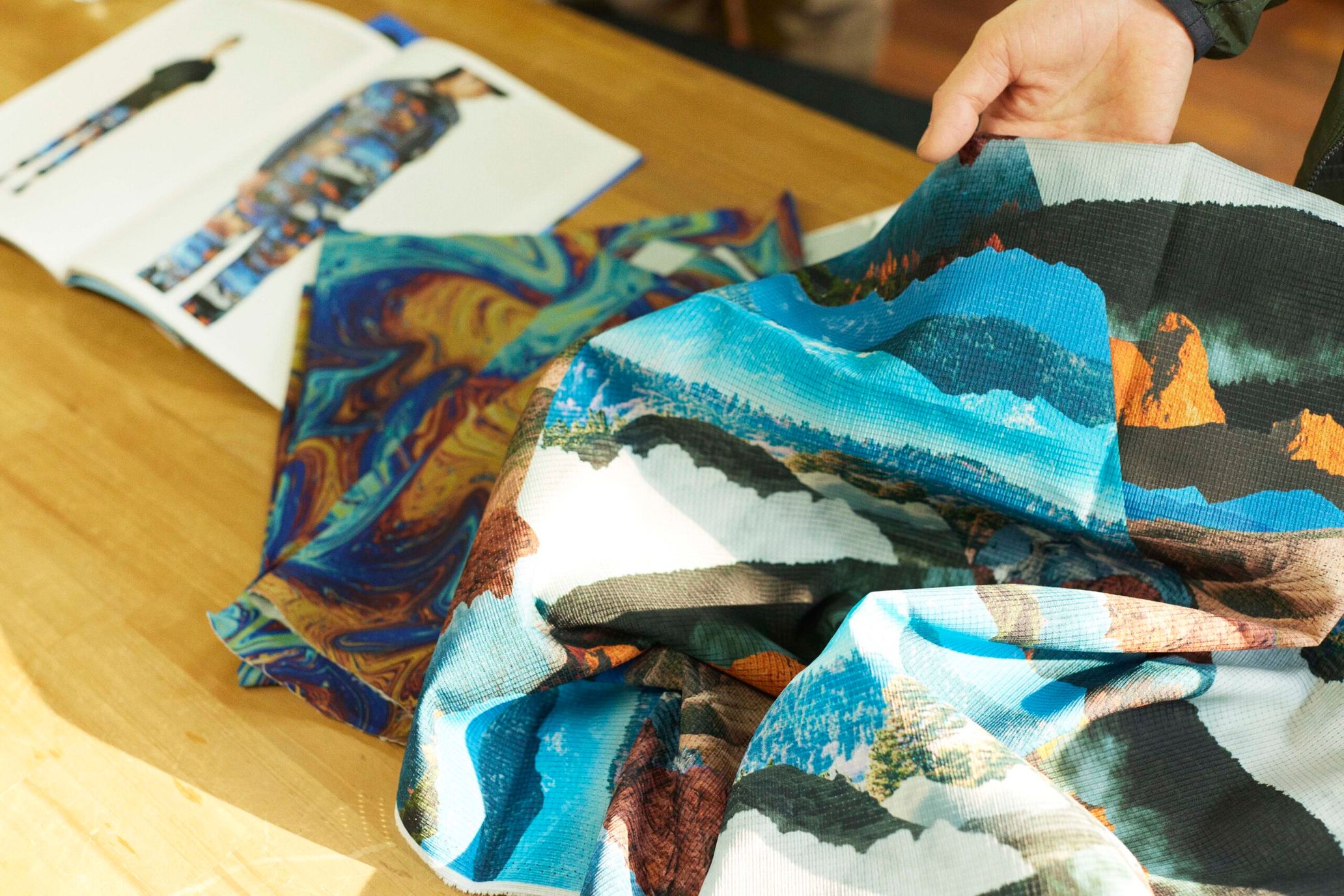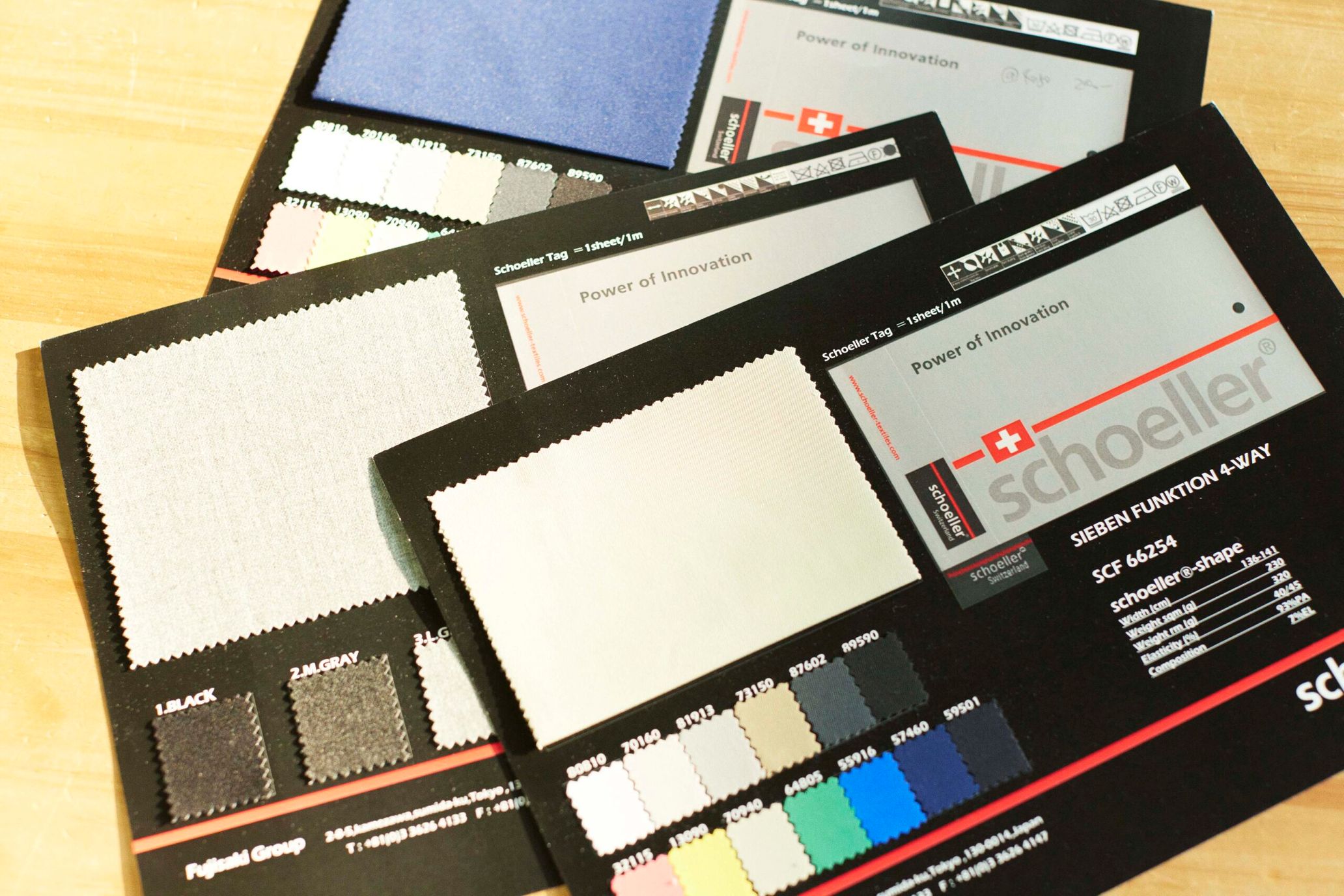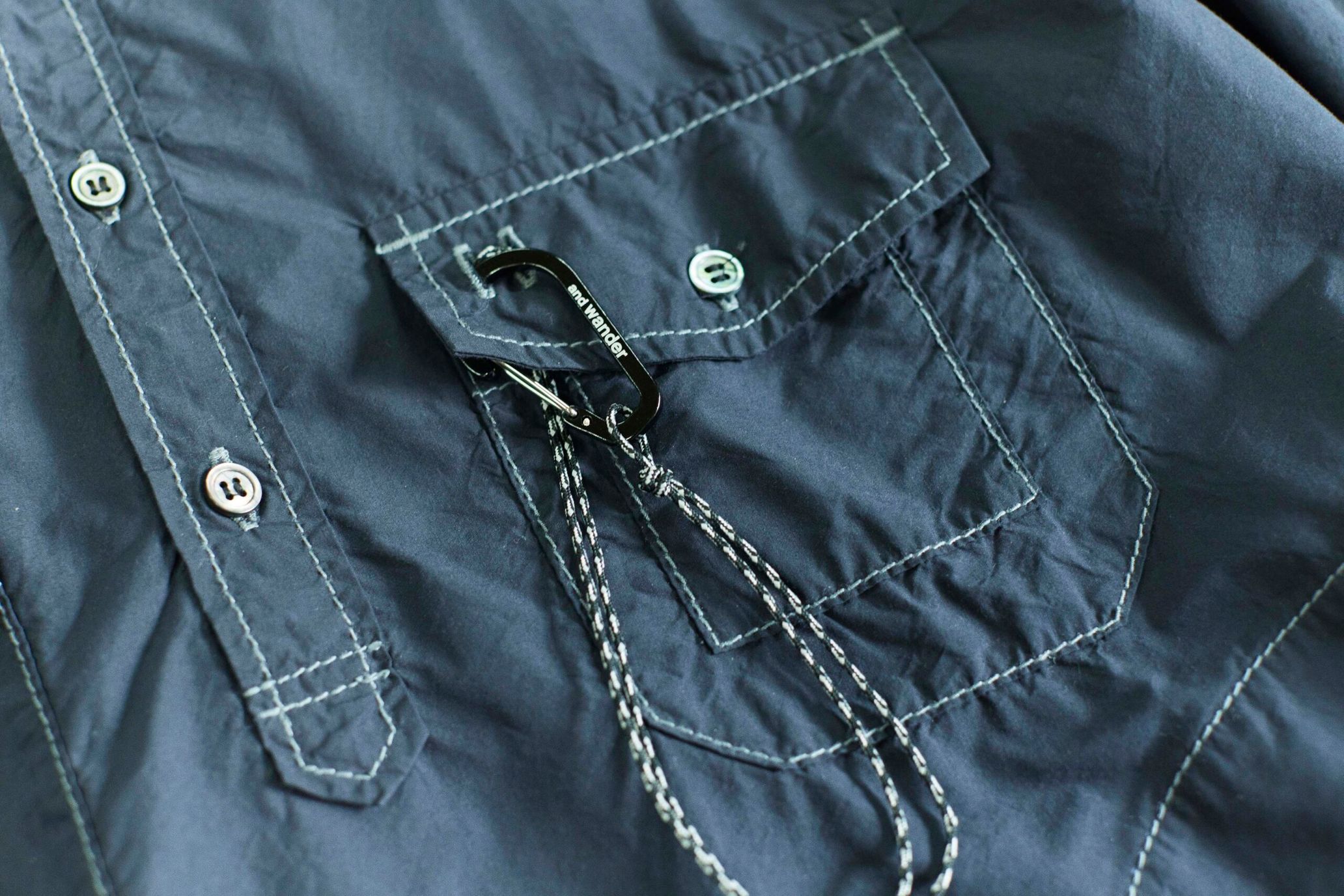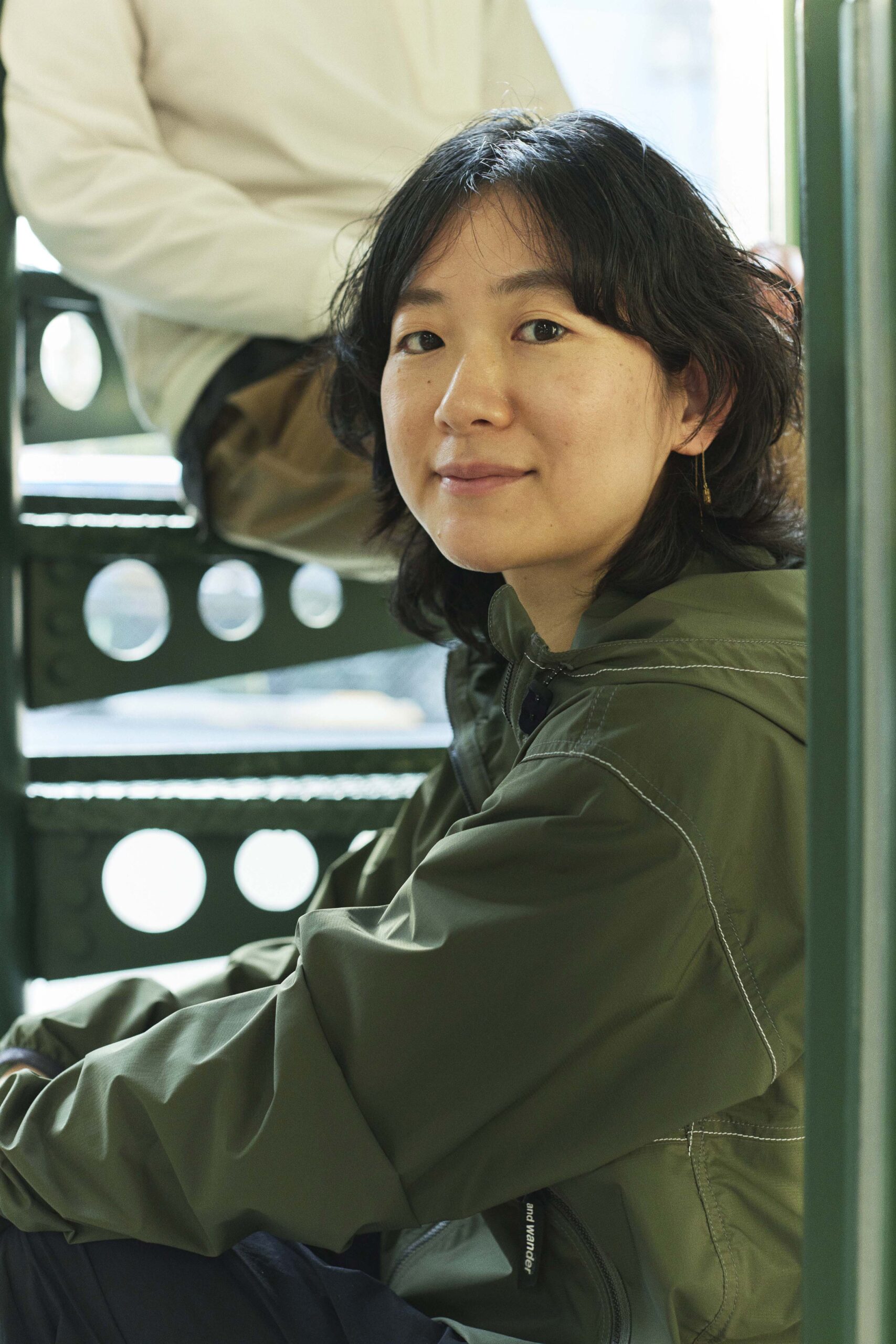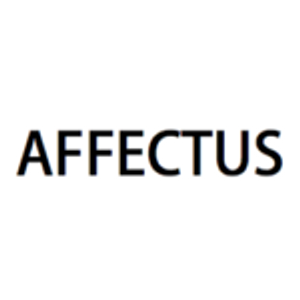It was a strange experience. Looking at the visuals of the Spring/Summer 2022 collection of and wander, the backdrop featuring mountains and rivers undoubtedly emitted a feel of the outdoors. However, the garments themselves had a sophisticated and cool vibe akin to minimalistic and contemporary clothes one would find in the city. I was both perplexed and fascinated by the discrepancy between what I physically saw and what I had imagined in my mind’s eye.
Today the outdoor brand and wander, founded in 2011, makes clothing and conveys the beauty of the outdoors to many people in ample ways, such as hosting and wander HIKING CLUB in which people could actually experience the mountains and nature.
Through asking designers Keita Ikeuchi and Mihoko Mori about the background of their clothesmaking, what came to the surface was a world where everyday life and nature are closely intertangled.
Connecting with nature and discovering the outdoors
——What were you into as a child?
Keita Ikeuchi (Ikeuchi): I’m from Atsugi-shi in Kanagawa Prefecture. I grew up in a residential area surrounded by a forest, which was made by carving out of the edge of the Tanzawa mountains. It may sound like a cliche, but I played among nature often, like building secret hideouts with friends, fishing and swimming in the local river, and more.
——When did you develop an interest in fashion?
Ikeuchi: I started liking clothes around middle school. I immersed myself in many magazines. Then I started wearing casual, American-styled clothes and streetwear, dug through secondhand clothes, and tried wearing high-end brands. I wore a lot of different styles from time to time.
——Mori-san, did you grow up around nature as well?
Mihoko Mori (Mori): I grew up in Aomori and Sapporo. My father was in a mountaineering club and loved the mountains. And because of that, I spent long vacations skiing and camping in nature from a young age. I became interested in fashion because my grandmother ran an atelier and made clothes, and I wanted to do a job where I could make things like her.
——What was the catalyst that made you want to experience the outdoors full-on?
Ikeuchi: This is from when I was in college; back then, I wasn’t seriously involved in the outdoors, but I loved traveling. I was what you’d call a backpacker and would visit many places abroad during school break. As a student, I learned the joy of seeing scenery I’ve never seen before and going to places I’ve never been before.
——Did you continue traveling after you graduated from college?
Ikeuchi: Once I became a working adult, it became hard to take long vacations. I could only go travel once a year or so. Then, my friend, who also liked the outdoors, invited me to go camping. Even though it was a weekend getaway where I was among nature for a short while, I found it refreshing and fun. I felt that it was extraordinary because of the scenery during the day and night, coupled with the ambiance created by tarps, tents, and other equipment. I’ve been loving the outdoors ever since.
——In what way did you enjoy the outdoors?
Ikeuchi: More and more people we knew started liking the outdoors, and we got to go camping even more. We found ways to have fun, such as hiking in the surrounding mountains, and started getting seriously into it.
——So, you started seriously becoming interested in the outdoors once you went camping.
Ikeuchi: Yes. I wasn’t even interested in outdoor clothes. I would wear Prada Sport and react like, “Oh no, I got a hole in it” (laughs).
Clothes born from different approaches
——I’d like to hear you talk about your brand’s collections. What’s the design process like for each season?
Mori: We start by selecting materials. We think about what function we want the clothes, not only items for mountaineering, to have. We also think about whether or not it’s necessary for the season. We value the functionality of the material and sensory qualities like texture and bounce. Also, a factor that influences [our design process] is how Japanese synthetic fibers are renowned worldwide. We’re in an environment where information about materials like new functions and directions are accessible.
——After you gather your function-oriented materials, how do you start designing the clothes?
Mori: We decide on the details and cut so that people can have fun comfortably in whatever field we set. We design with a sense of “arranging” a shape so that the qualities of the material come alive and don’t hinder the body’s movement.
——Do the things you experience daily ever tie in with the design of the clothes?
Mori: I think about what makes clothes difficult to wear and how I could improve their mobility for everyday acts like walking, riding on a bicycle, climbing up the stairs, and carrying a bag. It’s impossible to think about such things without my everyday life.
——Do you have other approaches aside from focusing on materials?
Ikeuchi: We also take an approach where we get sparks of inspiration, saying things like, “I wish something like so-and-so existed” or “I don’t think there’s anything like this in the world,” through outdoor activities and everyday life. Inspiration from different occasions is also a vital part of the brand.
——What sort of flashes of inspiration do you get?
Ikeuchi: Once, we thought about being active with a backpack on, so we put pockets in unusual spots. We also came up with the idea that when you make a bonfire, you need comfortable pants to sit on for a long time without getting holes from the fire, and then made something that we never did for our brand. Being out of our comfort zone is also an important aspect.
——Your collections are made by these two different approaches.
Ikeuchi: I believe having many different sides also contributes to the depth and fun of the brand.
——A look I liked from your Spring/Summer 2022 collection used fabric from Schoeller. What are the traits of this fabric?
Mori: Schoeller is a Switzerland-based fabric manufacturer. The 3XDRY fabric we used for this product has a water repellent function on the surface and a humidity control function on the inside. This type is usually water-repellent on both the surface and inside, but 3XDRY is outstanding because it has different functions on both sides. It doesn’t feel sticky on the skin, and it’s stretchy and comfortable. We’ve been using it since 2015 and updating the design of the clothes.
——The graphics of the Spring/Summer 2022 collection are also very memorable. How did you come to make them?
Mori: We commissioned Post Wook, a project by artist Natasha Chomko who lives in Los Angeles. She’s an artist who creates totally new landscapes by collaging natural and artificial elements like American national parks and cities.
——They’re very intriguing and have a futuristic feel to them.
Mori: When we commissioned her, the pandemic was raging on. We couldn’t travel, and our activities were severely limited. But her work seemed to transport the viewer into a new world. The expansion of my imagination liberated me from my constrained days.
I pictured a happy mood being in the air by the time it was Spring/Summer 2022 when the products printed with her collages were going to be out, with optimistic people wearing bold colors and prints after the pandemic. Unfortunately, the pandemic’s still ongoing, but I want people to see a new sight as though they were traveling.
To feel around the world and time travel.
Awareness directed toward world issues leads to creating
——stainability’s currently a vital keyword in the fashion industry.
Mori: We’ve been participating in exhibitions abroad since 2015. Overseas, there’s much more awareness surrounding sustainability, and people ask us things like, “Which materials are recycled?” and “Which products are environmentally friendly?” We felt the need to change our awareness. Even when we’re out in the mountains having fun, we can see tangible changes, such as the decrease in snowfall and its remnants in the summer.
Under such circumstances, we’re constantly looking for answers about the choices we can make to do our part. We choose recycled materials and accept secondhand clothes at our store.
——Do you have any projects you’re working on at the moment?
Mori: For Fall/Winter 2022, we’ll hold a special exhibition with the support of the brand CORDURA, whose products boast excellent resistance against abrasion and tear. Photographer Naoki Ishikawa-san’s photos of Maori forests will be exhibited alongside the message, “Living harmoniously with nature isn’t about humans protecting nature, but rather about humans and nature having an equal relationship.” We’ll also be selling shirts with the photos printed on them, made out of CORDURA fabric. The shirts made of CORDURA fabric are durable, don’t look tired, and can be worn for a long time. You can lessen the frequency of repurchasing them and indirectly reduce environmental harm. Also, a portion of the proceeds of these collaborative products will be donated to a forest conservation organization based in New Zealand. Why don’t we reconsider the relationship between people and nature via this special exhibition?
——This is a different topic, but unbelievable things are happening today, such as the war in Ukraine. How do you feel about the state of the world, personally? What do you want to express and say as fashion designers living in times like these?
Mori: Through and wander, I hope many people will come to interact with mountains and nature and learn about their appeal.
In Aomori, where I spent my childhood, I would walk to the river every winter morning to feed bread to swans. In springtime, the birds go back to Russia. Birds don’t have national borders, migrate in tune with the seasons, and enjoy the fruits of nature. As a small child, I prayed that the place to which the birds would return would be safe and thriving. That was more important to me than the principles and positions of a country. Nature taught me about the significant connections and cycles on the planet. I believe if the world could connect this way, we can create a kinder society.
——Why is your brand based in Tokyo when you enjoy spending time in nature? I assume it’s one option to work somewhere near the mountains. Is it because you want many people to enjoy the mountains, especially people living in the city?
Ikeuchi: We believe that city-dwellers who go out to experience nature on their days off understand our brand the best. Maybe we’re based in Tokyo because we want to show a lifestyle that’s similar to the ones such people have, as we’re one of them too.
and wander’s Spring/Summer collection video
At times, fashion designers observe the zeitgeist and channel what they perceive through their collection. A reality no one could’ve predicted is unfolding today; perhaps these fashion designers feel something only they could feel because of their profession. When I listened to the answer to my question, it was as if I saw the beauty of the other side of the world. At the same time, I felt like what’s imperative is learning more about the world. We can’t shut our eyes and only see what we want to see.
With their ears open and gaze directed at the world, and wander is sending out the voice of nature.
Keita Ikeuchi
Born in 1978. After graduating from Tama Art University, he joined ISSEY MIYAKE. In 2011, Keita Ikeuchi founded and wander with Mihoko Mori. Starting from his travels in college, he’s actively enjoyed the outdoors. Ikeuchi continues to convey the beauty of the outdoors by adding a wearable yet chic touch to clothes meant to be worn in nature.
Mihoko Mori
Born in 1978. After graduating from ESMOD Japon, Mihoko Mori joined ISSEY MIYAKE. She founded and wander with Keita Ikeuchi in 2011. Growing up in Aomori and Hokkaido, she had a lot of experience playing in nature. By utilizing high-performing materials and creating collections featuring stylish, sophisticated clothes with functionality, she continues to convey the beauty of the outdoors.
Photography Teppei Hoshida
Translation Lena Grace Suda
Edit Shuichi Aizawa(TOKION)


